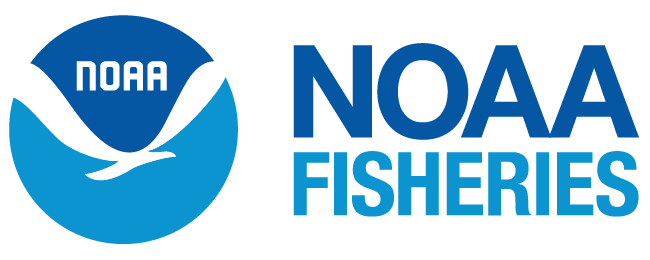Guidelines for Authors
Manuscript Preparation
Title page should include authors' full names and mailing addresses and the senior author's telephone, fax number, and e-mail address.
Abstract should not exceed one double-spaced page. It should state the main scope of the research but emphasize its conclusions and relevant findings. Because abstracts are circulated by abstracting agencies, it is important that they represent the research clearly and concisely.
Text must be typed double-spaced throughout. A brief introduction should portray the broad significance of the paper; the remainder of the paper should be divided into the following sections: Materials and methods, Results, Discussion, Conclusions, and Acknowledgments. Headings within each section must be short, reflect a logical sequence, and follow the rules of multiple subdivision (i.e. there can be no subdivision without at least two items). The entire text should be intelligible to interdisciplinary readers; therefore, all acronyms, abbreviations, and technical terms should be spelled out the first time they are mentioned. For general style, follow the Style Manual (2016) published by the U.S. Government Printing Office and Scientific Style and Format: the CSE Manual for Authors, Editors, and Publishers (2014, 8th ed.) published by the Council of Science Editors. For scientific nomenclature, use the current edition of the American Fisheries Society's Common and Scientific Name of Fishes from the United States, Canada, and Mexico and its companion volumes (Decapod Crustaceans, Mollusks, Cnidaria and Ctenophora, and World Fishes Important to North Americans). For species not found in the above mentioned AFS publications and for more recent changes in nomenclature, use the Integrated Taxonomic Information System (available at http://itis.gov/), or, secondarily, the California Academy of Sciences' Catalog of Fishes (available athttp://researcharchive.calacademy.org/research/ichthyology/catalog/fishcatmain.asp) for species names not included in ITIS. Common (vernacular) names of species should be lowercase.
Dates should be written as follows: 11 November 2020. Measurements should be expressed in metric units, e.g., metric tons as (t); if other units of measurement are used, please make this fact explicit to the reader. The numeral one (1) should be typed as a one, not as a lower-case el (l). Write out the numbers zero through nine unless they form part of measurement units (e.g., nine fish but 9 mm). Refrain from using the shorthand slash (/), an ambiguous symbol, in the general text.
Literature cited comprises published works and those accepted for publication in peer-reviewed literature (in press). Follow the name and year system for citation format (list citations alphabetically by the authors’ last names, and then by year if there is more
than one citation with the same authorship). In the text, cite Smith and Jones (2001) or (Smith and Jones, 2001). If there is a sequence of citations, list chronologically: Smith, 1982; Green, 1997; Smith and Jones, 2005. Abbreviations of serials should conform to abbreviations given in Cambridge Scientific Abstracts (http://www.csa.com/ids70/serials_source_list.php?ab=biolclast-set-c).
Authors are responsible for the accuracy and completeness of all citations. Literature citation format: Author (last name, followed by first-name initials). Year. Title of report or manuscript. Abbreviated title of the series to which it belongs. Always include number of pages. Cite all software and special equipment or chemical solutions used in the study, not in a footnote but within parentheses in the text (e.g., SAS, vers. 6.03, SAS Inst., Inc., Cary, NC).
Tables & Figures
- Zeros should precede all decimal points for values less than one.
- Sample size, n, should be italicized.
- Capitalize the first letter of the first word in all labels within figures.
- Do not use overly large font sizes in maps and for units of measurements along axes in figures.
- Do not use bold fonts or bold lines in figures.
- Do not place outline rules around graphs.
- Do not use horizontal lines in graphs to indicate measurement units on axes.
- Use a comma in numbers of five digits or more (e.g. 13,000 but 3000).
- Maps should have a North arrow (or compass sign) and degrees latitude-longitude (e.g., 170°E)
Tables are often overused in scientific papers; it is seldom necessary or even desirable to present all the data associated with a study. Tables should not be excessive in size and must be cited in numerical order in the text. Headings should be short but ample enough to allow the table to be intelligible on its own. All unusual symbols must be explained in the table legend. Other incidental comments may be footnoted with italic footnote markers. Use asterisks to indicate probability in statistical data. Do not type table legends on a separate page; place them on the same page as the table data. Do not submit tables in photo mode.
Figures include line illustrations, photographs (or slides), and computer-generated graphs and must be cited in numerical order in the text. Graphics will aid in the comprehension of the text, but they should be limited to presenting patterns rather than raw data. Avoid placing labels vertically (except on y-axis). Figure legends should explain all symbols and abbreviations and should be double-spaced on a separate page at the end of the manuscript. Please note that we do not print graphs in color.
Copyright law does not cover government publications; they fall within the public domain. If an author reproduces any part of a government publication in his work, reference to source is considered correct form.
Submission
Submit manuscript online at http://mc.manuscriptcentral.com/fisherybulletin
Commerce Department personnel should submit papers under a completed NOAA Form 25-700.
For further details on electronic submission, please contact the Scientific Editorial Office directly atkathryn.dennis@noaa.gov
Once the manuscript has been accepted for publication, you will be asked to submit a final electronic copy of your manuscript. When requested, the text and tables should be submitted in Word format. Figures should be sent as PDF files, TIF files, or EPS files.
Questions? If you have questions on these guidelines, please contact the Managing Editor, Shelley Arenas, at: Shelley.Arenas@noaa.gov
